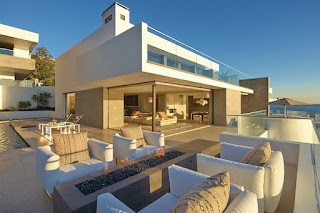Adventure in Albania part 1
Adventure in Albania part 1
A short story of traveling into this not very known land, the beauties and history within this land.
Map of Albania
Where is Albania? Albania, is a country in Southeastern Europe. It has a population of 3.03 million as of 2016. Tirana is the nation's capital and largest city, followed by Durrës and Vlorë. Albania is located in the south-western part of the Balkan peninsula, bordered by Montenegro to the northwest, Kosovo to the northeast, the Republic of Macedonia to the east, and Greece to the south and southeast. The country has a coastline on the northern shore of the Mediterranean Sea, the Adriatic Sea to the west and the Ionian Sea to the southwest where the Albanian Riviera begins. Albania is less than 72 km (45 mi) from Italy, across the Strait of Otranto which connects the Adriatic Sea to the Ionian Sea.In antiquity, the modern area of Albania was home to several Illyrian, Thracian, and Greek tribes, as well as several Greek colonies established on Illyrian territory. After the Illyrian Wars, it became part of the Roman provinces of Dalmatia, Macedonia and Moesia Superior. In 1190, the first Albanian state, the Principality of Arbanon was established by archon Progon in the region of Krujë, which became the capital. The territory of Albania was conquered by the Ottoman Empire in the 15th century, of which it remained part of for the next five centuries. After the collapse of the Ottoman Empire in Europe, following the Balkan Wars, Albania declared its independence in 1912 and was recognized the following year. The Kingdom of Albania was invaded by Italy in 1939, which formed Greater Albania, before becoming a Nazi German protectorate in 1943.
Albania is a democratic and developing country with an upper-middle income economy. The service sector dominates the country's economy, followed by the industrial and agriculture sector. After the fall of communism in Albania, Free-market reforms have opened the country to foreign investment, especially in the development of energy and transportation infrastructure. Albania has a high HDI and provides universal health care system and free primary and secondary education to its citizens.
Albania is a member of the United Nations, NATO, WTO, World Bank, the Council of Europe, the OSCE, the Organisation of Islamic Cooperation. It is also an official candidate for membership in the European Union. Albania is one of the founding members of the Energy Community, Organization of the Black Sea Economic Cooperation and the Union for the Mediterranean. It is home to the largest lake in Southern Europe and one of the oldest lakes in Europe.
Tourism in Albania is a growing sector and key to the economy of several regions of the country. A significant part of Albania's national income derives from tourism. In 2014, it directly accounted for 6% of GDP, though including indirect contributions pushes the proportion to just over 20%. Albania welcomed around 4.2 million visitors in 2012, mostly from neighbouring countries and the European Union. In 2011, Albania was recommended as a top travel destination, by Lonely Planet.In 2014, Albania was nominated number 4 global touristic destination by the New York Times. The number of tourists has increased by 20% for 2014 as well. With a total of 3.8 million visitors, Albania is the 25th (out of 47 countries) most visited country in Europe.
The bulk of the tourist industry is concentrated along the Adriatic and the Ionian Sea coast. The latter has the most beautiful and pristine beaches, and is often called the Albanian Riviera. The Albanian coastline has a considerable length of 360 kilometres (220 miles). The coast has a particular character because it is rich in varieties of sandy beaches, capes, coves, covered bays, lagoons, small gravel beaches, sea caves and others. Some parts of this seaside are very clean ecologically, which represent in this prospective unexplored areas, very rare in Mediterranean area. The Albanian Alps, part of the Prokletije or Accursed Mountains range in Northern Albania bearing the highest mountain peak. The southernmost glaciers in Europe were recently discovered in the Albanian part of the range. The most beautiful mountainous regions that can be easily visited by tourists are Dajti Mountain, Thethi, Tropojë, Voskopoja, Valbona, Kelmend, Prespa, Lake Koman, Dukat and Shkrel.
The increase in foreign visitors has been dramatic. Albania had only 500,000 visitors in 2005, while in 2012 had an estimated 4.2 million – an increase of 740% in only 7 years. Tourism in the summer of 2015 increased by 25 percent in contrast the previous year, accouring to the country's tourism agency. A USAid agency report indicated that the direct contribution of tourism is becoming a significant part of the country's Gross Domestic Product, a full 4.8 percent of it in 2013. The total contribution to the GDP was about 17 percent including wider effects from investment and the supply chain. This is expected to increase in the future.
Traveler perspective:
I was traveling by car and everything I saw for this day it was from the distance, the landscape of mountains which was characteristic for Albania fascinated me, and I was really impressed. The rivers, the lakes, the other natural phenomenons, the sea, everything looked magical to me.
The guide was with me all the time, and he told me some destinations we were going to visit, and what amused me was the history of these lands. He said we are going to learn about it as we visit places and museums, located in Albania's most important landmarks: Shkodra, Tirana, Krujë, and Berat.
There are various posts about these landmarks written in other posts:
Part 2: Albania adventure in Berat
Part 3: Albania adventure in Krujë
Part 4: Albania adventure in Shkodra
Part 5: Albania adventure in Tirana




Comments
Post a Comment